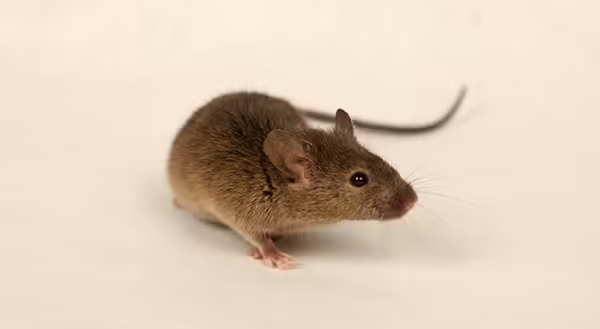
The U.S. Environmental Protection Agency (EPA) has released the final biological evaluation (BE), and associated response to comments, for 11 rodenticide active ingredients. The mitigation measures described in this final BE will also serve as the agency’s Rodenticide Strategy as outlined in EPA’s Endangered Species Act (ESA) Workplan.
Each year, rodents cause significant damage to property, crops, and food supplies across the United States. They may also spread diseases, posing a serious risk to public health. Rodenticides are used in residential, agricultural, and non-agricultural settings to control a variety of pests including house mice, Norway rats, roof rats, moles, voles, pocket gophers, prairie dogs, ground squirrels, feral hogs, and mongooses.
The 11 rodenticides evaluated in the BE are: chlorophacinone; diphacinone and its sodium salt; warfarin and its sodium salt; brodifacoum; bromadiolone; difenacoum; difethialone; bromethalin; cholecalciferol; strychnine; and zinc phosphide. These rodenticides are intended to control target animals using different biochemical mechanisms (e.g., neurotoxicity, reduced blood clotting). They also have different properties that affect the types of species that may be impacted. For example, some rodenticides may remain in target animals long enough such that predator or scavenger animals that consume the target animals may be affected. The assessment accounts for these different properties across the 11 rodenticides evaluated in the BE.
EPA’s final BE finds that the currently labeled uses of the 11 rodenticides evaluated in this assessment remained the same as those in the draft BE, and:
- Will have no effect on 88% of species and 95% percent of critical habitats;
- Are not likely to adversely affect 4-11% of species and 1% of critical habitats;
- Are likely to adversely affect 1-8% of listed species and 4% of critical habitats; and,
- Have a likelihood of future Jeopardy/Adverse Modification (J/AM) of less than 5% of listed species and less than 1% of critical habitats.
The final BE describes several scenarios intended to illustrate how EPA may implement mitigations from the Rodenticide Strategy as each rodenticide goes through registration review and for new active ingredient registrations. It provides additional clarity regarding the applicability of each mitigation measure to each rodenticide product and use, and how EPA anticipates implementing these measures.
The final Rodenticide Strategy does not itself impose any requirements or restrictions on pesticide use. Any mitigation measures needed to address potential likelihood of future J/AM for listed species will only apply in geographically specific areas where listed species with J/AM predictions are located, using EPA’s Bulletins Live! Two system, as part of label language, or in the Terms and Conditions of registration. Not all of these measures will be necessary for all uses or products containing these pesticide ingredients. Rather, they are measures from which EPA expects to choose when reducing exposure to listed species and their critical habitats, as necessary, for a specific active ingredient, use site, and application method (i.e., bait station, in-burrow, and broadcast).
During formal consultation, U.S. Fish and Wildlife Service (FWS) will use EPA’s effects determinations to inform their biological opinion(s). If FWS determines in its final biological opinion that additional or different mitigation measures are necessary to address any J/AM determinations or to address any incidental take beyond those mitigation measures, then EPA will work to ensure that any necessary registration or labeling changes are made.
The final BE is available in the docket EPA-HQ-OPP-2023-0567 on www.regulations.gov.
Background
In 2020, EPA released a draft human health and ecological risk assessment followed by a public comment period to support EPA’s registration review of these 11 rodenticides. Based on that assessment, EPA identified measures to reduce ecological exposures, which included several pilot listed species.
In December 2023, EPA released a draft BE for these 11 rodenticides that provided draft effects determinations for all registered uses. The draft BE included predictions of whether there is a potential likelihood that the rodenticides could lead to a future J/AM finding by the FWS for listed species and designated habitats. In addition, the draft BE identified possible mitigation measures to avoid predicted J/AM and minimize take of listed species.
The final rodenticide BE released today includes revisions after incorporating public comments on the draft BE. Highlights from the revisions include refinements of EPA’s predictions of potential likelihood of future adverse modification of critical habitat based on the use pattern and type of rodenticide, clarification of how different use types were combined for effects determinations, and including effects determinations for the most recently listed species. The final BE also includes examples of how EPA envisions implementing mitigations. While EPA included carcass search, scouting for carcasses that have signs of rodenticide exposure, in the draft as a mitigation measure to reduce exposures based on its inclusion in FWS’ previous biological opinion on other rodenticides (i.e., Rozol and Kaput), numerous commenters expressed concerns about its applicability and feasibility for many/most of the rodenticides and uses subject to this strategy. As a result, EPA is now specifying it expects to only select the carcass search measure when other mitigation measures are not practical or feasible. EPA has included an example of the limited types of scenarios in which EPA would expect to implement this measure in the final Rodenticide Strategy.
Learn more about how EPA meets its ESA obligations here.
Source: EPA Press Release 11/22/24
Pictured above: House mouse
Photo credit: Ed Freytag, City of New Orleans, Bugwood.org
ABOUT THE AUTHORS: Michelle Wiesbrook provides subject matter expertise and training in pesticide safety with an emphasis on horticultural weed science. She serves as the Illinois Pesticide Review newsletter editor, collecting and organizing material; and co-coordinates social media information for the PSEP program and ensures its timely publication.